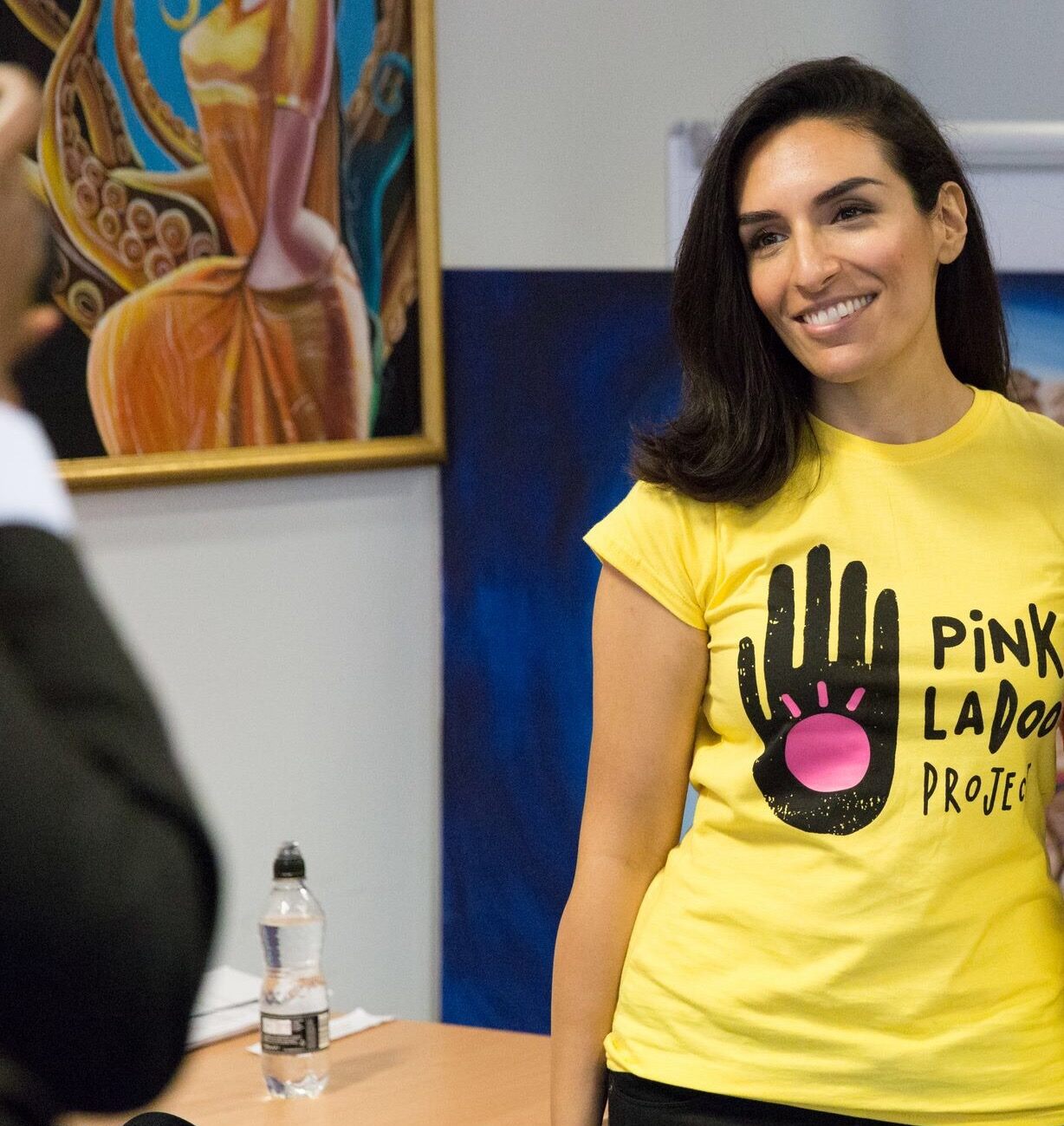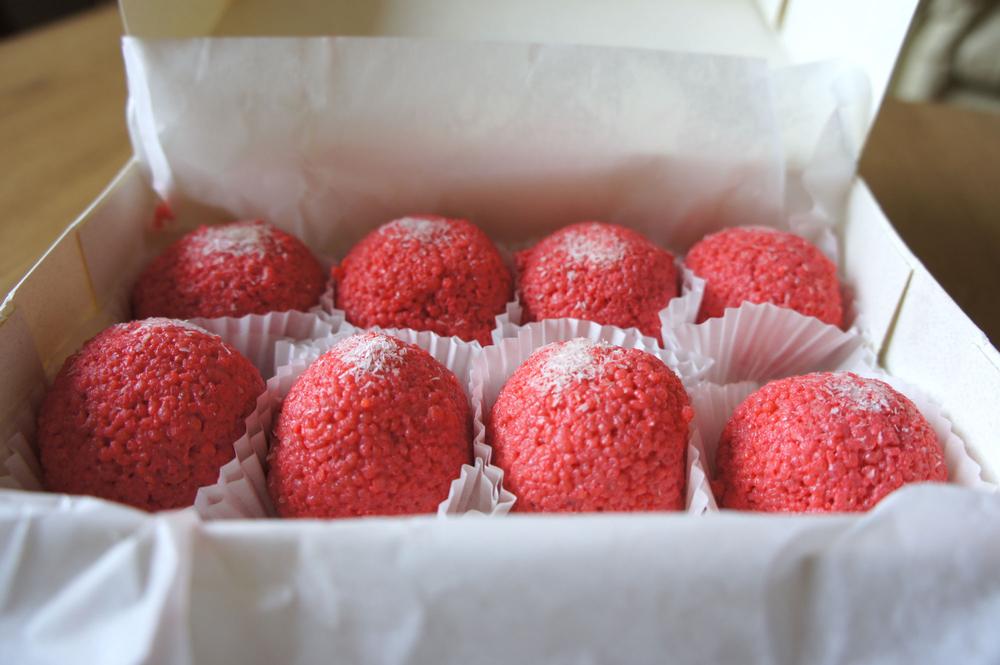The Pink Ladoo Project: spreading the sweetness of gender equality

Raj Khaira © Raj Gedhu Photography
A ladoo is an Indian sweet made from a combination of flour, sugar and ghee (clarified butter) and then shaped into little golden-yellow balls. Ladoos are usually served at religious ceremonies or to mark happy occasions like engagements, weddings, and the birth of baby…boys.
At least this was the discrepancy that London-based lawyer Raj Khaira noticed between the birth of her younger brother, and then her sister. Her brother’s birth was a cause for celebration, while her sister’s birth was greeted with muted enthusiasm – to say the least.
This made an indelible impact on the then 12-year-old Khaira, eventually prompting her to launch the Pink Ladoo Project (PLP) two years ago on October 11, which incidentally coincides with the United Nations’ International Day of the Girl Child.
Khaira founded the project in response to what she felt was “the urgent need to raise the value of women and to eliminate the social ills stemming from patriarchy and misogyny within the South Asian diaspora by dismantling the sexist customs and traditions that hold them together.”
And sometimes that change in custom can be initiated through something as simple as joyfully welcoming the birth of a child – gender notwithstanding. Hence PLP’s catchy tagline, “equality is sweet.”
And in case the “pink” in Pink Ladoo might seem like a nod to the color commonly associated with girls in western culture, the PLP’s website explains that other cultures interpret the color differently. “For thousands of years, pink and red have been symbols of strength, power, luck, and celebration in South Asian cultures and are worn by both South Asian men and women during weddings and other festivities.” Thus the “pink” ladoo deftly bridges both cultures and symbolizes girls, women, prosperity and joy.

A box of pink ladoo © Zab Mustefa
Women Talk Online spoke with Khaira about PLP’s impact so far and where it’s heading.
DW: 11 October 2017 marks two years since the Pink Ladoo Project (PLP) was launched. How far have you come in spreading your message that “equality is sweet”?
Raj Khaira: I think distance travelled is a bit of a difficult one in terms of looking at what the campaign has achieved in the last two years. One on hand we’ve come very far. There are four different countries (Australia, Canada, the UK and the US) that are following our practices. We have around 40,000 followers on social media; we’ve been covered by some of the world’s most notable press; our posts have reached millions of people. One post in particular reached three and a half million. So on the one hand I feel like we’ve achieved a lot and it’s come very far. But then I’m equally conscious that there’s so much work that needs to be done in this space. 40,000 followers might seem like a lot but if you look at the South Asian diaspora globally it’s actually not very many. So we’ve travelled quite a far distance in our early years but we still have a long way to go.
You mentioned in a previous interview that gender inequality cannot be achieved just through education, but by tackling deeply rooted culture and customs. How difficult was it to burrow down to the roots and sow the seeds of change there?
There are some famous global studies that show that the two things that have the most statistically significant impact on the frequency of childbirth are the education level of the mother, and whether she’s in gainful employment. Nobel prize-wining economist Amartya Sen says that these are statements about women’s voices. It is believed that a woman who is educated and gainfully employed is more likely to use and exercise her voice and her agency and make decisions for herself. But the issue of gender preference and bias is more nuanced. There is a tendency to think that education is the magic bullet and actually it has been shown that it’s just not true. This debate around gender preference is going to require a lot more work. We have to be more political about it: it’s going to require engagement on a socio-cultural and on a geo-political level. In some of the studies I’ve read, it has been shown that education and wealth actually have no impact on whether families are less or more likely to prefer boys – this gender preference occurs more or less across the spectrum.
Who has it been easier to convince: men or women?
It’s difficult to say who has been easier to convince. I’ve had one comment from one woman saying that this campaign is not relevant because her family celebrates girls. But from the comments (from men) on social media or things that have been said to me in person, it’s men who’ve said that their families celebrate girls, that it’s not relevant anymore or that this is not really a topical issue. To me it almost feels like a denial of gender disparity within the south Asian community. My answer to that has always been – even if there’s only one family that’s not celebrating the birth of their girl, that’s enough for me to think that my campaign has relevance and is legitimate. I don’t think people are very comfortable with the notion that they might be consciously or subconsciously treating their boys and girls differently. So it feels very personal. The inclination then is to react in a way that suggests this is actually not true, it’s not valid, or not happening when we know that it is. To deny the privilege associated with being male is just bonkers these days. This isn’t something that’s whimsical or a theory. It’s empirical: male privilege is a real thing. It is the quantifiable advantage that you have in life across various different outcomes if you are male. But the point of the campaign isn’t to make accusations or to shun people. It’s to give them a way of redressing that imbalance, and levelling the playing field – and to get in touch with their own subconscious biases.
You’ve also said that the PLP is not just about undoing all traditions and customs but creating new customs and traditions that empower women? What new custom are you particularly proud of?
I’m really proud of this new tradition that we’ve created to celebrate a girl via pink ladoo. The campaign is very much about creating a new tradition to celebrate women, and that through this we’ve encouraged the south Asian diaspora to critically examine the sexism that may exist within current customs and traditions, and to try and create new customs off the back of that. We’ve been able to share a story about a girl who was given away at her wedding by her mum instead of her dad and that was a viral post. We’ve had so many messages and comments (from other women) since then saying that they’re going to get their mums to do the same. So we’re very proud of that impact.
What are the future plans for the PLP?
We want to be able to create a forum where people can come together and learn and be inspired by south Asian women and discuss issues that affect south Asian women in a positive academic place. Where this isn’t just about opinions being bandied around but about real people discussing real issues and trouble shooting ways to deal with them.
Interview: Brenda Haas
Editor: Marjory Linardy
_____
WTO RECOMMENDS
A Kingdom of girls tucked away in an Indian village
Karolin Klüppel, a Berlin-based photographer, travelled to the Indian State of Meghalaya to capture one of the world’s rare matrilineal tribes through her photographic lens.
No place for girls in rising India
It is ironic that while India is one of the world’s fastest growing economies, many Indian women are still trapped in the dark ages. Just name it – female feticide, child marriage, sexual violence, dowry, domestic slavery and abuse top gender evils. It might not necessarily be in that order.
Brave Indian girls and their mission against human trafficking
Two Indian school girls have received national bravery awards for helping police uncover and arrest a group of cross-border human traffickers. DW spoke to the two girls about the motivation behind their Mission.



